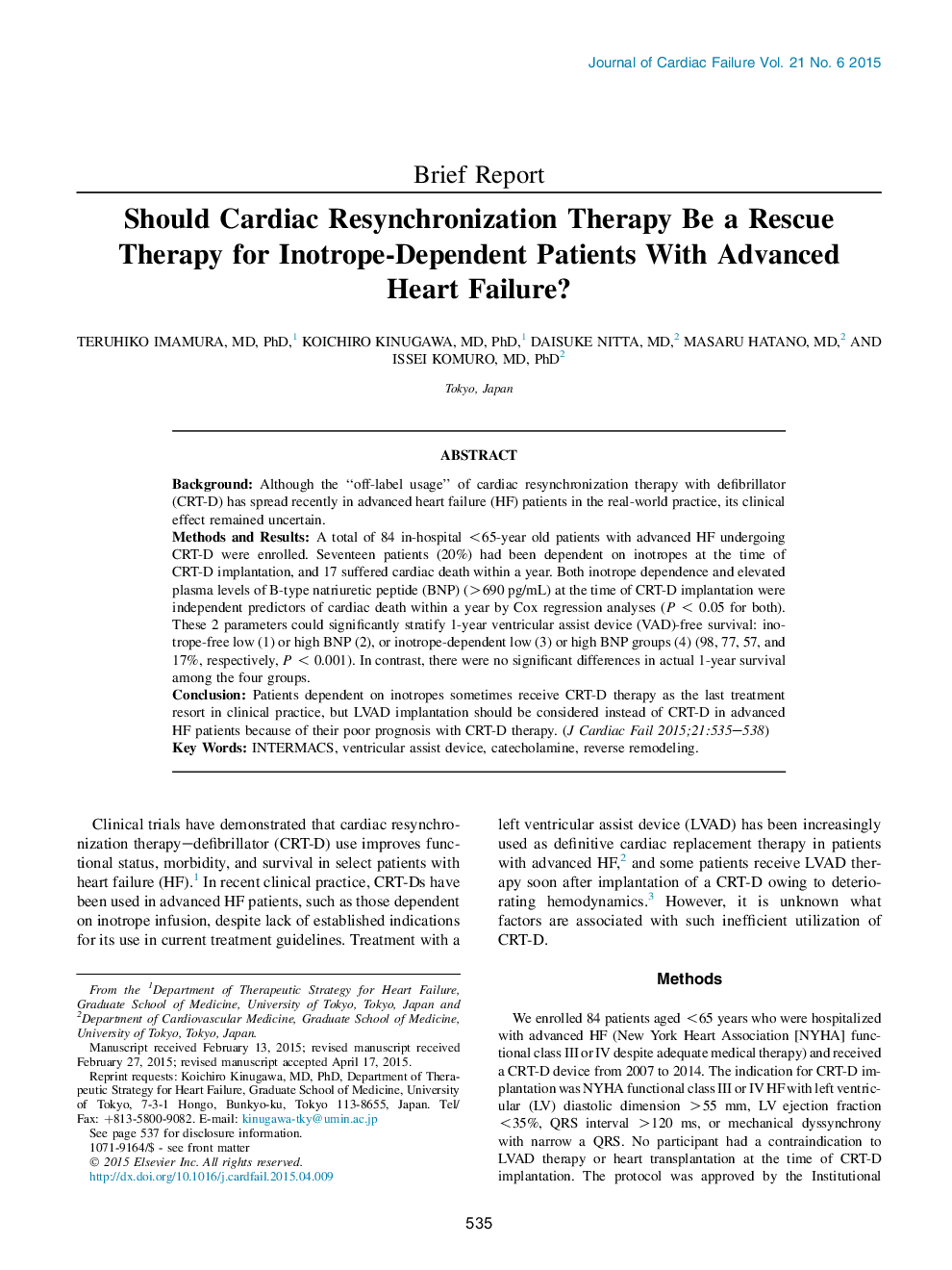| Article ID | Journal | Published Year | Pages | File Type |
|---|---|---|---|---|
| 2958899 | Journal of Cardiac Failure | 2015 | 4 Pages |
•Patients dependent on inotropes sometimes receive CRT-D as the “last resort.”•CRT-D does not improve survival in patients dependent on inotropes without LVAD.•LVAD therapy should be considered instead of CRT-D in such advanced patients.
BackgroundAlthough the “off-label usage” of cardiac resynchronization therapy with defibrillator (CRT-D) has spread recently in advanced heart failure (HF) patients in the real-world practice, its clinical effect remained uncertain.Methods and ResultsA total of 84 in-hospital <65-year old patients with advanced HF undergoing CRT-D were enrolled. Seventeen patients (20%) had been dependent on inotropes at the time of CRT-D implantation, and 17 suffered cardiac death within a year. Both inotrope dependence and elevated plasma levels of B-type natriuretic peptide (BNP) (>690 pg/mL) at the time of CRT-D implantation were independent predictors of cardiac death within a year by Cox regression analyses (P < 0.05 for both). These 2 parameters could significantly stratify 1-year ventricular assist device (VAD)-free survival: inotrope-free low (1) or high BNP (2), or inotrope-dependent low (3) or high BNP groups (4) (98, 77, 57, and 17%, respectively, P < 0.001). In contrast, there were no significant differences in actual 1-year survival among the four groups.ConclusionPatients dependent on inotropes sometimes receive CRT-D therapy as the last treatment resort in clinical practice, but LVAD implantation should be considered instead of CRT-D in advanced HF patients because of their poor prognosis with CRT-D therapy.
